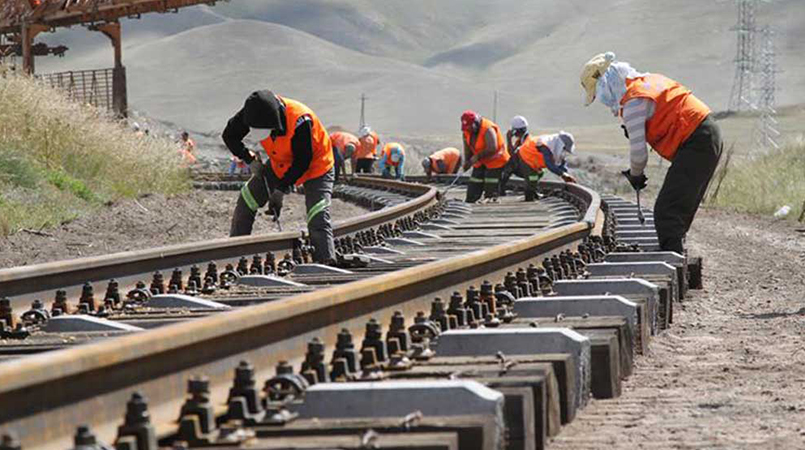Earlier this week, the Federal Railroad Administration (FRA) issued Safety Advisory 2016-02, setting forth new occupational health and safety guidelines for railway workers and railroad contractors in the United States. The advisory is specifically directed at roadway workers (railway employees and contractors performing work on or near tracks) whose activities often fall outside the scope of FRA safety regulations, and are therefore subject to OSHA jurisdiction. The advisory follows a June 10, 2016 Final Rule in which FRA established a number of new safety procedures and training requirements for railway employees and contractors as part of its ongoing effort to prepare railroad employees for compliance with OSHA safety standards and prevent work-related injuries and fatalities.
With the release of Safety Advisory 2016-02, FRA seeks to address and eliminate some of the most common hazards and safety risks encountered by roadway workers. These include slips, trips and falls, falling objects, electrocution, unexpected releases of hazardous energy, workers struck by off-track equipment or other vehicles, collisions between off-track equipment and trains, and general hazardous working conditions. FRA data showed that between 2000 and 2015, more than 60 fatalities occurred while roadway workers were performing work that was outside of the scope of the Administration’s safety regulations, prompting the FRA to bring its policies into greater alignment with that of OSHA.
The advisory lays out three important guidelines intended to not only help roadway workers comply with OSHA standards while performing work outside of FRA jurisdiction, but also to establish best practices for work activities performed within the Administration’s oversight. These guidelines include:
- Developing hazard-recognition strategies to identify and address existing conditions that pose actual or potential safety hazards, emphasizing the contributing factors or actions involved in roadway worker-related fatalities.
- Providing annual training to roadway workers on the use of hazard recognition strategies developed by the railroad or the railroad contractor.
- Implementing procedures for mandatory job safety briefings compliant with OSHA’s regulations prior to initiating any roadway worker activity. Consistent with OSHA’s regulations, roadway workers should use hazard-recognition procedures to identify potential hazards in their job briefings and then determine the appropriate measures to mitigate the identified hazards.
The first of these guidelines highlights the need to establish an effective hazard identification system that gives roadway workers the ability to report worksite hazards as they are encountered. This system should also provide an efficient mechanism for those hazards to be corrected, and to document those actions in order to demonstrate compliance. However, developing and implementing such a system may present several challenges for employers in the rail transportation industry. Timely communication of hazard information between workers and supervisors may be the greatest of these difficulties, as work typically occurs in remote locations without phone or internet connectivity.
Secondly, expanding safety training requirements to include more comprehensive hazard recognition and awareness is intended to support and strengthen the implementation of more effective hazard identification systems. Training should be made available to all roadway workers regardless of whether they are employees of the railroad, or one of its contractors. OSHA continues to reaffirm its commitment to protecting temporary workers and contractors in joint employer scenarios, enforcing workplace safety training requirements on both temporary and host employers. OSHA training standards also require accurate recordkeeping of training completion for each of your employees, and the ability to produce that documentation upon request by an OSHA inspector. However, since railroad workers and contractors are frequently distributed across large geographic areas, and sometimes travel to various locations throughout, providing those employees with sufficient training creates another substantial challenge for employers.
Lastly, the FRA advisory establishes the need to conduct workplace safety briefings or meetings prior to each job in order to communicate hazards to roadway workers, and to address job- or site-specific safety issues. These briefings must cover topics including hazards associated with the job, work procedures involved, special precautions, energy-source controls, and personal protective equipment requirements. OSHA requires safety briefings to be held at least once before each day or work shift in scenarios where hazardous work is being performed. OSHA also requires that additional job safety briefings be held if any significant changes that have the potential to affect the safety of the employees occur during the course of the work. Employers must document that they have conducted these safety briefings, and verify that employees have attended in order to comply with OSHA requirements.
Let VelocityEHS Help
VelocityEHS can help bring you up to speed with the new FRA guidelines, and simplify compliance with OSHA regulations to help you keep your crews safe. Our Incident Management solution includes an easy-to-use hazard identification system that allows you and your employees to document hazards and instantly assign corrective actions, and our new VelocityEHS Mobile App lets you perform hazard IDs right from your smartphone — anywhere, anytime, even when you’re offline! Our Training Management solution gives you the ability to quickly schedule, coordinate, evaluate and document workplace safety training for each of your employees across your entire enterprise with one seamless, centralized system, and our On-Demand Training solution gives your employees access to nearly 100 expert-reviewed training courses across a wide variety of EHS topics to provide them with the knowledge and skills they need to work safely, no matter where they are. In addition, our Safety Meetings solution lets you easily schedule and document pre-job safety meetings, invite attendees, record meeting topics and agendas, and document meeting information using your tablet or smartphone to demonstrate compliance with FRA and OSHA standards.
